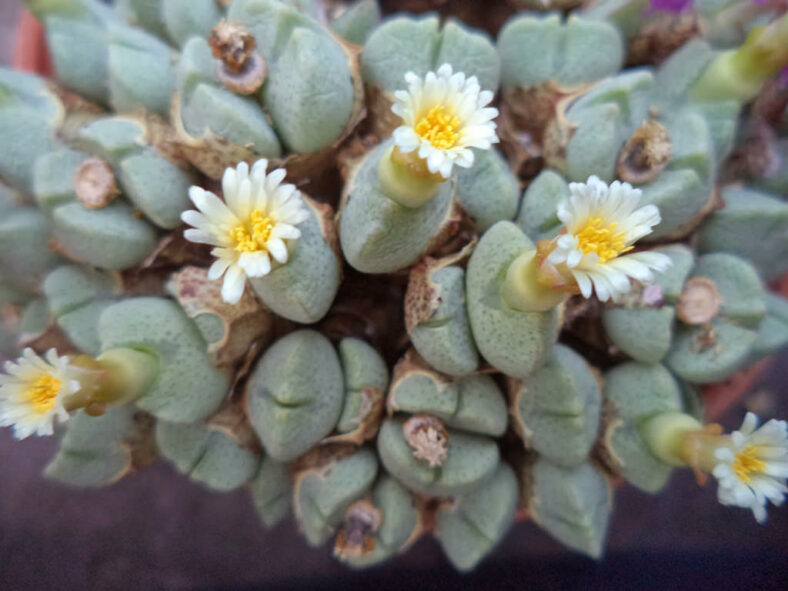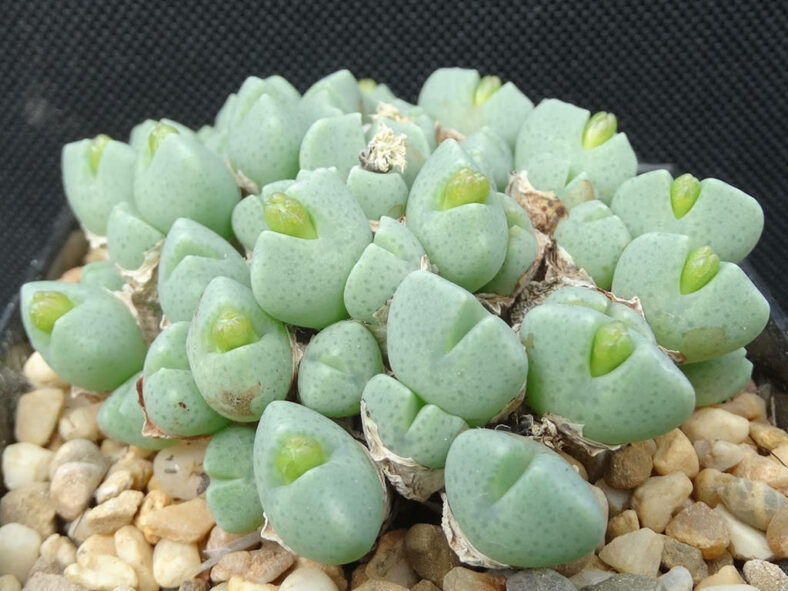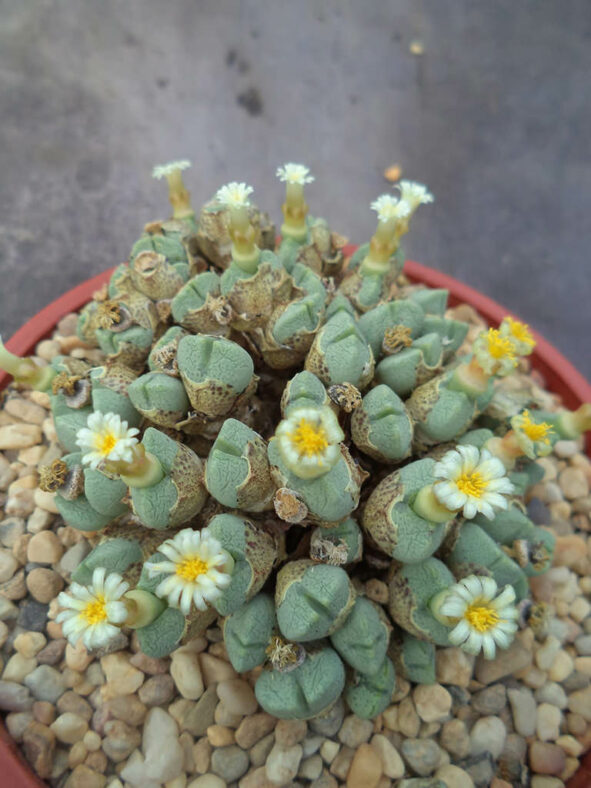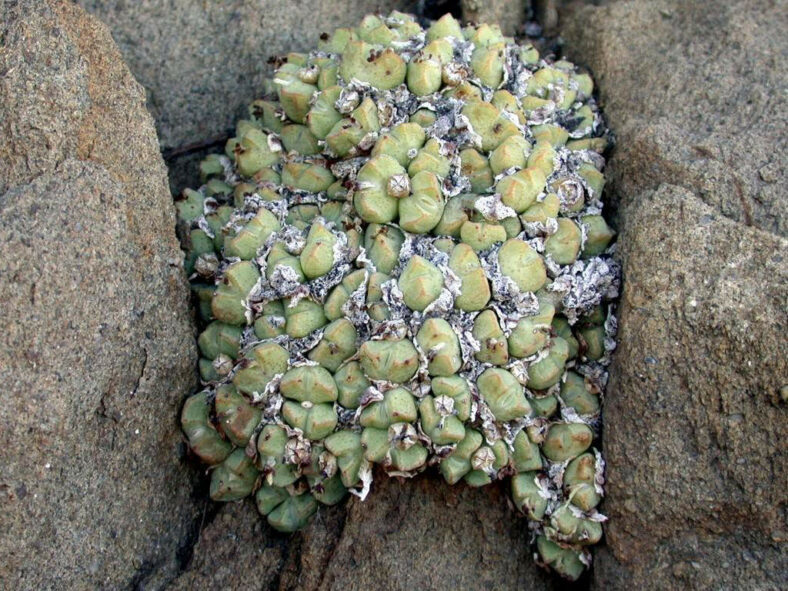If you have limited space, Conophytum quaesitum is a perfect choice. It is easy and rewarding to grow if you learn and understand its needs.
Scientific Name
Conophytum quaesitum (N.E.Br.) N.E.Br.
Synonym(s)
Conophytum quaesitum subsp. quaesitum, Derenbergia quaesita, Mesembryanthemum quaesitum
Scientific Classification
Family: Aizoaceae
Subfamily: Ruschioideae
Tribe: Ruschieae
Genus: Conophytum
Etymology
The specific epithet "quaesitum (pronounced kwae-es-EE-tum)" means "special, rare, sought out, looked for" and probably refers to the not typical morphology of this species.
Origin
Conophytum quaesitum is native to South Africa (Western Cape) and southern Namibia. It grows in shaded cracks and crevices at high altitudes on quartz and gneiss.
Description
Conophytum quaesitum is a dwarf succulent that forms a dense clump of leaf pairs fussed into heart-shaped bodies. The leaf pairs are usually bilobate and strongly keeled and can grow up to 1.6 inches (4 cm) tall and 0.6 inches (1.5 cm) in diameter. The clumps can reach up to 8 inches (20 cm) in diameter. They are pale greyish-green to pale yellowish-green, usually heavily spotted or sometimes spotless, and often wrinkled.
During fall and early winter, Conophytum quaesitum produces short-tubed flowers with white to pink (rarely magenta) petals and a tuft of yellow stamens in the center. The flowers emerge from the central fissure, open at night, and have a sweet scent. The fruits are capsules with 4 to 6 locules.

How to Grow and Care for Conophytum quaesitum
Light: This plant requires bright light but not too much direct sun. To prevent sunburn, find a spot where it can receive a few hours of full sun in cooler periods of the day.
Soil: Conophytum quaesitum needs porous soil that allows water to drain away quickly for optimum plant growth. You can use a commercial potting mix for succulents or make your own.
Temperature: High temperatures are not a problem, but the plant is not frost-hardy. It grows best in USDA Plant Hardiness Zones 10b to 11b, with average minimum winter temperatures ranging from 35 to 50 °F (1.7 to 10 °C).
Watering: Conophytum quaesitum requires little or no water when it goes dormant in the spring. When it begins to grow again in the fall, it is safe to water deeply but allow the soil to dry before between waterings. If leaves start to wrinkle during active growth, your plant needs water.
Fertilizing: This plant is a light feeder and does not need fertilizer if repotted every two years.
Repotting: It is best to repot it at the beginning of the growing season, but it can be done almost any time when the plant is actively growing.
Propagation: Conophytum quaesitum is usually started from seeds. It can also be easily propagated by division. The best time to divide the plant is in late summer or early fall before it begins to break dormancy or after it has flowered.
Learn more at How to Grow and Care for Conophytum.
Toxicity of Conophytum quaesitum
Conophytum quaesitum is considered non-toxic, making it safe to have around children and pets.
Links
- Back to genus Conophytum
- Succupedia: Browse succulents by Scientific Name, Common Name, Genus, Family, USDA Hardiness Zone, Origin, or cacti by Genus
Photo Gallery
Click on a photo to see a larger version.


